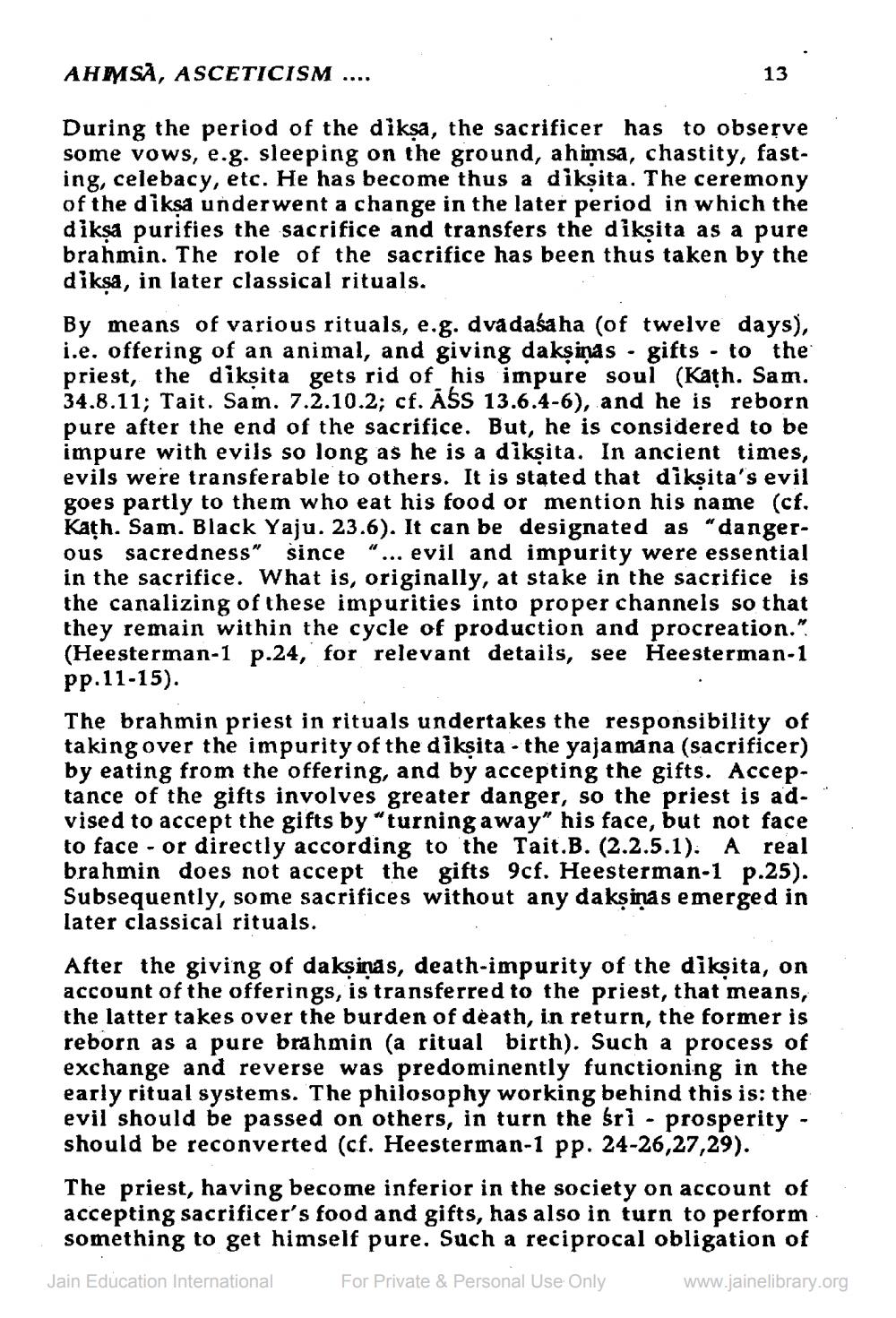________________
AHMSA, ASCETICISM ....
During the period of the dikṣa, the sacrificer has to observe some vows, e.g. sleeping on the ground, ahimsa, chastity, fasting, celebacy, etc. He has become thus a dikṣita. The ceremony of the dikṣa underwent a change in the later period in which the dikṣa purifies the sacrifice and transfers the dikṣita as a pure brahmin. The role of the sacrifice has been thus taken by the dikṣa, in later classical rituals.
13
By means of various rituals, e.g. dvadasaha (of twelve days), i.e. offering of an animal, and giving dakṣiņas gifts to the priest, the dikṣita gets rid of his impure soul (Kath. Sam. 34.8.11; Tait. Sam. 7.2.10.2; cf. ĀŚS 13.6.4-6), and he is reborn pure after the end of the sacrifice. But, he is considered to be impure with evils so long as he is a dikṣita. In ancient times, evils were transferable to others. It is stated that dikṣita's evil goes partly to them who eat his food or mention his name (cf. Kath. Sam. Black Yaju. 23.6). It can be designated as "dangerous sacredness" since evil and impurity were essential in the sacrifice. What is, originally, at stake in the sacrifice is the canalizing of these impurities into proper channels so that they remain within the cycle of production and procreation." (Heesterman-1 p.24, for relevant details, see Heesterman-1 pp.11-15).
The brahmin priest in rituals undertakes the responsibility of taking over the impurity of the dikṣita - the yajamana (sacrificer) by eating from the offering, and by accepting the gifts. Acceptance of the gifts involves greater danger, so the priest is advised to accept the gifts by "turning away" his face, but not face to face or directly according to the Tait.B. (2.2.5.1). A real brahmin does not accept the gifts 9cf. Heesterman-1 p.25). Subsequently, some sacrifices without any dakṣinas emerged in later classical rituals.
After the giving of dakṣiņās, death-impurity of the dikṣita, on account of the offerings, is transferred to the priest, that means, the latter takes over the burden of death, in return, the former is reborn as a pure brahmin (a ritual birth). Such a process of exchange and reverse was predominently functioning in the early ritual systems. The philosophy working behind this is: the evil should be passed on others, in turn the śrì - prosperity - should be reconverted (cf. Heesterman-1 pp. 24-26,27,29).
The priest, having become inferior in the society on account of accepting sacrificer's food and gifts, has also in turn to perform something to get himself pure. Such a reciprocal obligation of Jain Education International For Private & Personal Use Only
www.jainelibrary.org




